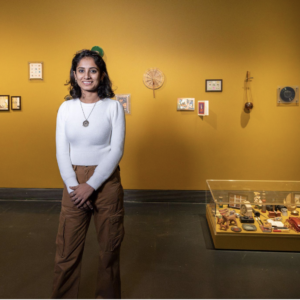
Simchowitz is to present Longevity, the gallery’s first exhibition of the Los Angeles-based artist, Coulter Jacobs.
Born Jacob Coulter in Los Angeles in 1977, Jacobs received a degree in journalism from San Diego State University in 2001. While maintaining a full-time union job as a Los Angeles Department of Water & Power water utility worker, Jacobs has constructed an expansive art practice including two published novels, books of poetry, painting, sculpture and drawings. In Longevity, Jacobs presents each facet of his practice in his debut solo exhibition.
In the artist’s mind, Longevity is a testament to the patience and wit that art demands. Careers in art can explode and sizzle for decades, but Jacobs has also watched as the careers of countless artist friends burned bright and blow away like a tumbleweed. It is a capricious community, fraught with competition and changing tastes, and one that prefers short-term gains to anything resembling “longevity.”

“Longevity is about manifesting that creative instinct, the trajectory of a career as an artist is to keep yourself inspired so that you can continue to inspire others. It can’t be a flash in the pan.”
Jacobs
Jacobs has nurtured a fascinating, slow-burn art career that has taken him from his grandmother’s attic in Long Beach, “writing, trying to be Jack Kerouac or whatever,” to a hard-nosed painting studio in Pico Union, where a fire destroyed his space and erased his archives in 2017. He slowly rebuilt his practice of noir and tattoo-influenced abstraction and now works out of a custom-built garage studio at his home in San Pedro – when he’s off work. He is also a chapter president of the esteemed Southern California car club, Duke’s.
Jacobs cites dozens of artists, musicians, and writers as inspiration in his practice: John Altoon, Bob Dylan, Burroughs, Guston, Frankenthaler, Mitchell, Reinhardt (Django and Ad), amongst many, many others, yet the hard-living, wildly curious Martin Kippenberger might be a more apt parallel – his career and life a totalizing work of art. Jacobs is a voracious reader, filling his paintings with reference to psychology, literature, film, and scene-legends in the South Bay and underground tattoo and car communities.
“I still consider myself a student. I think for every artist, this education never ends,” he says.
Coulter Jacobs’ practice is a life-affirming one. His excitement for art and its discourse, despite an upbringing which put him “as far away from fine art as humanly possible,” can make us remember the primal, human necessity for art-making and the jouissance of aesthetic expression.





